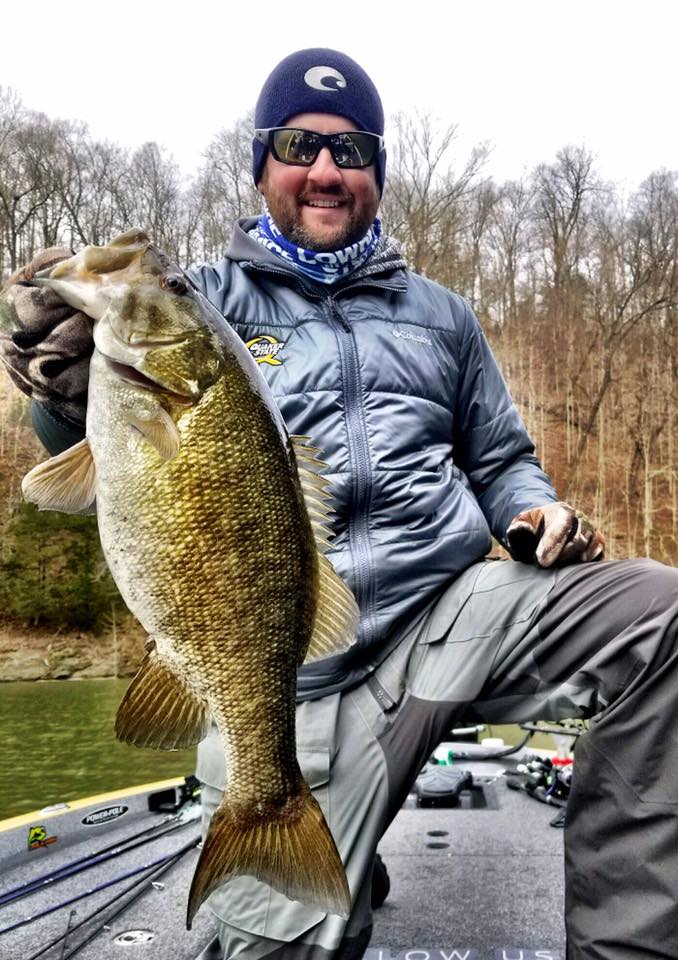 This is a time of year when bass are itching to get closer to the bank.
This is a time of year when bass are itching to get closer to the bank.
They know that they must feed up to have the strength to spawn and according to professional angler Matt Arey these fish are categorized into two types of bass:
-
baitfish eaters
-
crawfish focused bass.
He makes sure to have presentations for both types of bass.
READ RELATED: Topwater Line … What Type, What Pound Test and Why?
 “Baitfish Eaters”
“Baitfish Eaters”
Using his electronics, Arey is always on the lookout for baitfish in cooler water.
“You are going to find bass relating to bait in deeper water. I start by looking for high-percentage areas like deep points,” he shares. “You will find that the bass are generally ganged up in areas and around baitfish. Another thing to keep in mind is that these fish are generally on the move and might be gone the next time you head out, but they usually won’t be too far away.”
Arey added that deep water or at least access to deep water is a critical component to finding the right areas. He targets these fish with a three-pronged approach that includes a small swimbait, spoon, and a dropshot rig.
“I usually start with the swimbait and use it before I get right on top of the fish. A 3” Lunkerhunt Swim Bento Minnow on a ¼-ounce head can be deadly for these fish especially if they are suspended over deep water,” he says.
He likes to fish the small swimbait on 10-pound P-Line Tactical fluorocarbon but will downsize to 8-pound at times.
“It definitely affects the fall rate going to a lighter line, and that can be a factor to get more bites on some days,” adds Arey.
The other two techniques, a dropshot, and spoon go hand in hand according to Arey, and he likes to fish both presentations vertically in 20- to 40-feet of water directly below the boat.
His soft plastics, spoon size and color come down to the size and type of the baitfish but he says a ½-ounce white and silver spoon is often his best producer.
“I like to fish the spoon on 10-pound Tactical and for the dropshot, and really any time I am using spinning gear, I like 15-pound P-Line TCB 8 braid. I really like the hi-vis yellow color and then add a leader of 8-pound Tactical fluorocarbon,” he says.
“Crawfish Eaters”
While Arey likes to spend time out deep looking for fish eating shad and other baitfish offshore, he doesn’t rule out shallow fish that are keyed on crawfish. A crankbait and spinnerbait are his top choices this time of year.
While a spinnerbait has nothing in common with the appearance of a crawfish, it plays a role for Arey with these fish.
“It doesn’t look like a crawfish, but I feel like it will catch those shallow fish this time of year. With a large ¾- or 1-ounce spinnerbait I like to slow roll it up near the bank and around any isolated cover,” he says. “Doing this is about getting a quality bite instead of catching numbers, and I feel like it is one of the best ways to catch a kicker this time of year.”
Arey likes to fish the big spinnerbait on 15-pound P-Line Tactical fluorocarbon and focuses on isolated rocks and hard cover. Like all moving baits, he says the more wind or water movement you can find, the better.
The crankbait is another proven fish catcher this time of year. Arey is like many bass anglers and chooses a crawfish imitator in both the style and color of crankbait he uses.
“One of the things I look for is clay banks or anything that will both hold heat and attract crawfish,” he shares. For four to 10-foot of water he likes 10-pound P-Line Tactical, and for less than four feet of water, he ups it to 12-pound test.
READ RELATED: Jimmy Reese Selects Line for the Fishing Conditions
One Fluorocarbon Line for Many Techniques
Arey named the same fluorocarbon line for all of these five techniques and says it has to do with it having all of the qualities he looks for in a line.
“P-Line has always had the strongest line, and since I switched to Tactical, it is about all I use. The biggest thing for me is how great it casts, and it is also very abrasion resistant,” he says. “It works great for all of these techniques on baitcast gear and for guys who want to use it on spinning gear it eliminates a lot of the line twist and problems that you get with other fluorocarbons.”
These five techniques can cover the two completely different types of bass. Shallow fish focused on crawfish, and deeper bass eating baitfish are two scenarios that play out on just about every body of the water in the country. Matt Arey keeps it simple and reminds himself that forage is the focus of bass this time of year.


 Advertising
Advertising